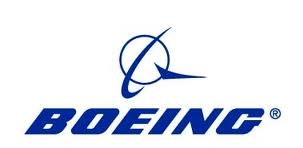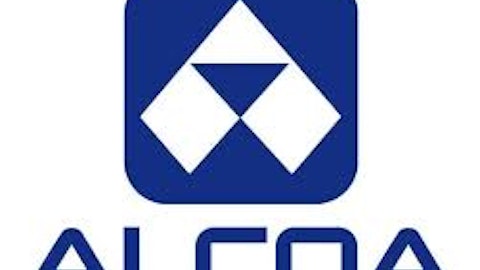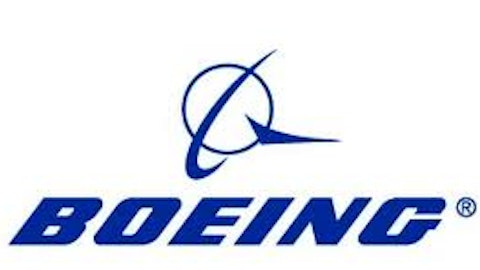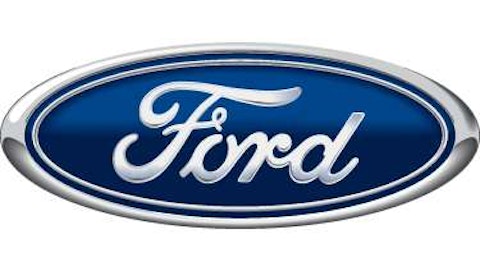The Boeing Company (NYSE:BA) is an American aerospace and defense corporation, and the company released its 4Q 2012 earnings on Jan. 30, 2013.
Boeing’s Earnings
Boeing reported 4Q 2012 earnings per share of $1.28, while analysts had estimated earnings per share of $1.19. Revenues were up 14% to $22.3 billion. However, during the same quarter last year Boeing earned $1.84 per share.

For defense, space and security, the U.S. remained a major market for Boeing, but the company has expanded into a lot in the international market as well. International customers for defense space and security systems contributed revenues of 24% and grew to 41% of the current backlog. The company expects its products to continue to do well in the coming years, especially in Brazil, Middle East, and Asia Pacific.
Valuation
Boeing is trading at a P/E of 10.64x and is yielding a dividend of 2.60% on its stock. Using an industry P/E of 10.13x, take a look at how you should value the company:
According to high estimates, we value Boeing at $78.20, which means it’s trading almost at fair value. Hence, it seems that it doesn’t have any significant upside potential at this moment.
Dreamliner’s Recent Issues
As a result of recent battery issues in the Dreamliner, it had been grounded in the U.S, Europe, and some parts of Asia Pacific. Boeing is currently working on the 787 battery changes in order to minimize fire risks on its Dreamliner. According to the Wall Street Journal, Dreamliner could be flying again sometime in March this year. Air investigators in the U.S. and Japan have announced that more time would be required in order to know the exact reason behind the Dreamliner’s battery incidents. As the U.S. National Transportation Safety Board (NTSB) said that it was “probably weeks away” from completing the probe. It’s the same in the case in Japan, where one of the regulators had this to say: “The investigation will continue as scheduled. Resuming flights in March……seems far too optimistic to me.”
Dreamliner is not only damaging Boeing’s reputation, but it is also affecting its clients to a great extent. All Nippon Airways and Air India have announced that they would seek compensation from Boeing once the scale of damages becomes clear to the airlines. All Nippon Airways has decided to cancel 1,887 flights in March that will affect more than 25,000 passengers.
Airbus A350 XWB
Boeing’s main competitor in the aerospace industry has always been Airbus. Boeing’s Dreamliner doesn’t have any direct competitor at the moment, but it could face a major threat from Airbus’s A350 XWB in the future. Previous designs of the A35O were rejected by its prospective clients, so the company had to make some major changes in its earlier proposal. According to the company, the new A350 XWB (extra wide body) will be 18% more fuel efficient than the Dreamliner. The A350 XWB which is all set to be launched in the middle of 2014, and has a total of 561 orders as of now. In fact, the Dreamliner had an 18 months buffer before the launch of its rival the A350 XWB, but the recent issues faced by the 787 may mean that small advantage means nothing.
Defense Systems Industry
In the defense systems industry, Boeing’s main rival is Lockheed Martin Corporation (NYSE:LMT). Lockheed Martin is currently trading at a forward P/E (1yr) of 9.62x and has a PEG of 1.98. Incorporating a dividend yield of 5.30% into its PEG, we get to a PEGY of 0.98; this makes LMT an attractive buy in the defense systems’ industry. Furthermore, the mean target price of $95 means that it’s an undervalued stock and has an upside potential of almost 10%. Moreover, with far less competitors in the industry, LMT is expected to perform well above par in the years ahead. In short, we recommend buying LMT for an upside of 10% plus a whopping dividend yield of 5.30%.
Conclusion
2012 was a great year for Boeing, but unfortunately things in 2013 could be somewhat different. The company has always remained one of the top buys in the market, but the recent 787 issues have scarred its reputation to some degree. Moreover, with the Dreamliner’s competitor the A350 XWB all set to debut in 2014, things could become more complicated. As Boeing gets 40% of its cash revenue after delivering aircrafts to its clients, the recent issues with Dreamliner could affect its cash flows. Moreover, it has almost been a month since Boeing delivered its last 787. Furthermore, one cannot predict when the 787 will be able to start its operations again. If the regulators in the U.S. and Japan give a green signal to Dreamliner in March, things could get better once again. Otherwise, it won’t be easy for Boeing to continue increasing its dividends as it has done in the past. In short, we still remain neutral on Boeing in the short run. You can have a further look at my detailed take on Boeing here.
The article Is This Giant Still a Buy? originally appeared on Fool.com and is written by Waqar Saif.
Copyright © 1995 – 2013 The Motley Fool, LLC. All rights reserved. The Motley Fool has a disclosure policy.





